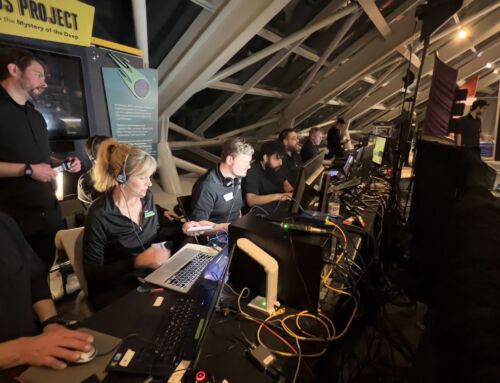
Why Go LIVE?
Going live rather than recording a video and sending it out for each person to view creates a unified experience. People can ask questions live and see the comments together. They have a sense of connectedness to each other and to the CEO. Think of it as similar to watching a movie at the theatre, together with a large group and sharing the experience rather than simply watching at home alone.
Going LIVE also tops recording and editing because the CEO comes across as more authentic. The audience knows any video that’s not live can be edited and changed. Even if there are a few stumbles, your CEO comes across as more human and therefore more relatable.
There are so many great reasons to watch live, but there are also some valid concerns. Some companies are slow to start live broadcasting because “it’s live”. What if something goes wrong? What if the live broadcast doesn’t work? Much of it is fear of the unknown.
How Do I Choose A Live Streaming Company?
In order to take some of the stress out of your live stream, be sure to hire a company with a strong background in video production and live streaming. Many companies are jumping into live streaming especially since it became popular so quickly during the pandemic. Once you find an experienced and highly rated live streaming company, consider whether you might want to have a rehearsal day. The team should bring all the gear and rehearse as if it’s the actual event. Rehearsal days are expensive as they usually require the same crew and equipment as the actual broadcast.
Rehearse or Test In Advance?
If you decide to have a rehearsal day, keep these things in mind. Rehearsal days are expensive as they usually require the same crew and equipment as the actual broadcast. The rehearsal usually goes longer than expected. That’s because key executives may want to go over their presentations several times. This is also their chance to see how the broadcast will look, and they may have input on camera placement and angles. If there is no rehearsal, you will definitely want to have the streaming company set up a “test” before the actual event. You can have a short run through testing all the microphones and any other elements such as videos during this time. It’s far less expensive to use this option. Your live streaming crew will most likely need about three hours to set up and test.
What Equipment Options Do I have?
As far as equipment, you have lots of options. Depending on how you’d like the presentation to look for people in the room and online, you’ll be asked if you want the presentation slides to show in the room as well as online. Would you like to see the slides on monitors or projectors? Consider how many people will be in the room. That will determine how large the screens will be as well as how many audio speakers you’ll need.
Also, you’ll want to think about the number of camera you want. For instance, would you want a wide shot in the back of the room, a camera to get close ups and possibly another camera in the front of the room to get audience reaction.The more cameras, the more expensive. If you are trying to save money, the least expensive option is one camera. It’s not much more expensive to add an additional camera set on a wide shot. The second camera would not require a camera operator.
On the other hand, if you are more concerned about creating a fast paced, quality live show, you may want to have four, five or six cameras.
Consider A Sound Engineer With Mics, Speakers, And A Console
You may need a sound engineer with equipment. Some rooms are set up with speakers in the ceiling. But, these are not ideal. The sound isn’t controllable, and if someone in the back of the room coughs, everyone will hear that as well as they hear the CEO. We do use room audio from time to time depending on how good the system is and what the client wants. But, it’s always better to bring in all aspects of the sound to ensure an optimal broadcast. So many people tend to focus on the video portion of live streaming, when it’s actually the sound that is most challenging.




